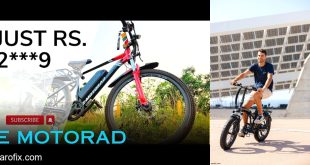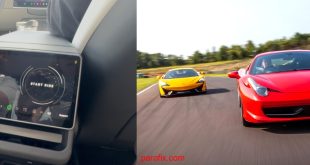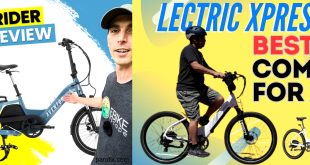What Are Custom Motorized Bicycles Like?
Custom motorized bicycles are a perfect blend of classic cycling and modern engineering. Imagine the simplicity and agility of a regular bike paired with the raw, electric or gas-powered boost of a motor. For both beginners and seasoned riders, these machines open doors to personalized, eco-conscious, and thrilling rides that standard bikes just can’t match.
The Core Concept of a Custom Motorized Bicycle
At its heart, a custom motorized bicycle is a traditional bicycle frame equipped with a motor—either electric or combustion—and often enhanced with upgraded components tailored to the rider’s needs. Unlike standard e-bikes or mopeds, the “custom” label gives riders complete control over performance, style, and functionality.
From my personal experience tinkering with motorized bikes, I found the ability to select motor type, battery size, and even gear ratios transformed my daily commute into something exciting and efficient. Instead of a one-size-fits-all ride, I could build a bike that fit my city streets, my weight, and even my style preferences.
Technical Details: What Makes a Custom Motorized Bicycle Special
- Motors: Options range from hub motors (quiet, efficient, low maintenance) to mid-drive motors (better torque, climbing capability). Some enthusiasts even experiment with small combustion engines.
- Batteries and Fuel Systems: Electric builds often feature lithium-ion packs with 36–72V configurations. Gas-powered setups use compact 49cc–80cc engines, often modified for reliability and performance.
- Frame Reinforcement: Custom bikes typically need reinforced frames or forks to handle higher speeds and torque. Steel and aluminum are common, while carbon fiber is emerging for lightweight enthusiasts.
- Braking Systems: Upgraded disc brakes or hydraulic systems are essential, especially for bikes capable of 40–60 km/h or more.
- Control Systems: Advanced throttles, pedal-assist sensors, and display units allow riders to fine-tune acceleration, torque, and energy usage.
During one of my builds, I replaced a standard coaster brake with a hydraulic disc system. The difference was night and day—stopping from 50 km/h felt precise, safe, and even satisfying.
Customization Options
Custom motorized bicycles aren’t just about performance—they’re about personal expression. Common modifications include:
- Aesthetic Enhancements: Custom paint jobs, retro styling, or minimalist modern looks.
- Comfort Features: Gel saddles, ergonomic handlebars, and suspension upgrades.
- Performance Tuning: Gear ratios, throttle response, and motor tuning.
- Accessory Add-ons: LED lighting, GPS trackers, and smartphone integration.
One of my favorite customizations involved a vintage-style frame with a hidden battery pack. It looked like an old-school cruiser, but had modern torque and a quiet motor—basically a “sleeper” bike that turned heads without screaming technology.
Eco-Friendly Benefits and Sustainability
Motorized bicycles—especially electric versions—represent a low-impact transportation option. They consume far less energy than cars, reduce emissions, and require fewer raw materials to build. Customization allows you to choose energy-efficient motors, optimize battery usage, and even experiment with solar-assisted charging.
In urban settings, custom motorized bikes can replace short car trips, cutting down traffic congestion and pollution. I personally swapped a 10 km daily car commute for my electric custom bike and saw immediate benefits: lower costs, zero emissions, and even improved mood thanks to the fresh air and exercise.
Practical Tips for Riding and Maintenance
- Battery Maintenance: Keep lithium-ion batteries between 20–80% charge, avoid long-term deep discharges, and store in cool conditions.
- Motor Check: Inspect mounting bolts, wiring, and gear alignment regularly.
- Brake and Tire Safety: Ensure proper tire pressure and brake pad wear, especially if you upgraded speed and torque.
- Cleaning: Use damp cloths—avoid high-pressure water on electronics.
- Software Updates: If your bike has a digital controller, firmware updates can improve efficiency and performance.
From my own rides, a simple tip is to always double-check battery connections before heading out. One loose connector can ruin a commute—and nothing feels worse than being stranded mid-ride!
Frequently Asked Questions About Custom Motorized Bicycles
Q: How fast can a custom motorized bicycle go?
Speed depends on motor type, battery or engine size, and gearing. Electric models usually hit 25–50 km/h, while some tuned builds can exceed 60 km/h. Gas-powered setups may reach similar or higher speeds, but local laws often limit maximum velocity.
Q: Are custom motorized bicycles street-legal?
This depends on local regulations. Many regions require registration, insurance, or helmet laws for bikes over certain speeds or with engines above a certain cc. Always check your city or country’s legal framework before riding.
Q: Can beginners handle a custom motorized bicycle?
Absolutely! Many beginners start with electric kits that provide pedal-assist modes for gradual learning. It’s like learning to ride a standard bike with a turbo boost—you control the power, not the other way around.
Q: How long do batteries last?
Lithium-ion packs usually last 3–5 years depending on usage, charging habits, and storage. Proper care can extend life and maintain performance.

Q: How much maintenance is needed?
Routine maintenance is minimal: check brakes, tires, motor mounts, and battery connections. Electric motors are mostly maintenance-free, while gas engines need occasional oil changes and spark plug checks.
Q: Are custom motorized bicycles expensive?
Costs vary widely. A basic kit may cost a few hundred dollars, while high-end custom builds can exceed $3,000–$5,000 depending on materials, motors, and electronics. The key is balancing performance, sustainability, and personal style.
Trends and Innovations in Custom Motorized Bicycles
- Smart Controllers: IoT integration allows monitoring battery, speed, and location via apps.
- Battery Technology: Solid-state batteries promise lighter weight and longer range in the near future.
- Lightweight Frames: Carbon fiber and advanced alloys reduce weight without sacrificing strength.
- Urban Mobility Solutions: Integration with ride-sharing, GPS mapping, and electric lanes for smarter city commuting.
- Eco-Conscious Production: Recycled metals, modular parts, and energy-efficient motors are on the rise.
From visiting bike expos and talking to builders, it’s clear that modularity and sustainability are the next frontier. Bikes that can upgrade batteries, swap motors, or integrate with city infrastructure are becoming mainstream ideas.
Why Custom Motorized Bicycles Are Worth It
Riding a custom motorized bicycle isn’t just about speed or looks—it’s about personalized comfort, efficiency, and fun. From the smooth torque of an electric mid-drive to a retro-styled frame with modern performance, every choice reflects your needs and personality.
Some key benefits:
- Tailored ergonomics for long rides.
- Performance matching your commute and terrain.
- Eco-friendly alternative to cars or motorcycles.
- Customization of aesthetics, electronics, and accessories.
- Future-proof upgrades without a full replacement.
For me, switching from a standard bike to a custom motorized build transformed urban commuting. I saved time, reduced stress, and joined a community of like-minded riders who value efficiency, creativity, and sustainability.
Final Thoughts
Custom motorized bicycles are more than machines—they’re an experience. They bridge cycling and motorized transport in a way that’s fun, sustainable, and endlessly customizable. For city riders, hobbyists, or anyone curious about low-impact commuting, they provide a perfect blend of technology, creativity, and freedom.
Whether you’re building your first kit or fine-tuning a high-performance electric cruiser, a custom motorized bicycle can be as unique as your imagination. Step into this world, experiment, and ride with purpose—eco-conscious, fun, and fully customized.
 Electric Bike & Bicycle Repair Hub Master DIY electric and traditional bike repairs with practical tips and trusted product recommendations.
Electric Bike & Bicycle Repair Hub Master DIY electric and traditional bike repairs with practical tips and trusted product recommendations.



